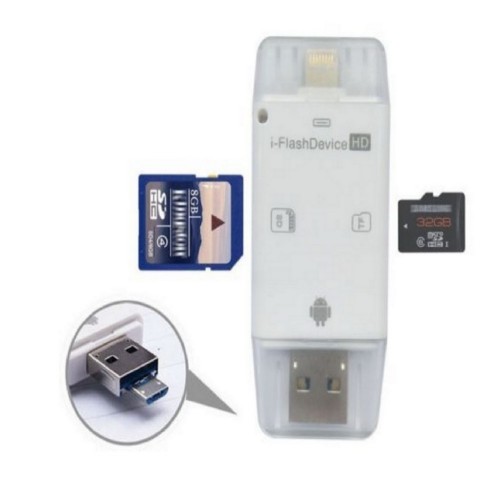
Exchange files between your iDevices, Androids and Mac/PC.
This PC program works fine with 32-bit versions of Windows XP/7/8/10. PhotoFast i-FlashDrive HD allows you to store, view and manage files on your iPad, iPhone or iPod touch. Exchange files between your iDevices, Androids and Mac/PC. Application features document viewer, file manager, voice recorder and text editor. It also supports many file management operations: like delete, move, copy, email and more.The i-Flashdevice hd may be a nice solution.SPLITTER AUX LIGHTNING FOR APPLE IPHONE IPAD ETC connect bluetooth.
Iflash Device Hd Free App To
The built-In full.Use an external memory of the ipad / iphone / ipod touch.A secure file encryption with file encryption for privacyYou can manage all your data via your ios create / delete / copy / etc.All documents can be used as the primary format. The PhotoFast i-FlashDrive app is the best way to manage all your files on iOS devices.The i-Flashdevice hd is a built-In memory styled usb flash drive that works with all lightning-Enabled ios devices, including apple’S latest iphone 6, iphone 6 plus and ipad air 2. The usb drive measures 54269Mm, weights 10G, its lightweight and compact profile lets you easily take the storage device with your iphone or ipad.PhotoFast's i-FlashDrive HD is an interesting device that combines a USB flash drive, a 30-pin Dock Connector, an Apple Lightning to 30-pin Dock Connector adapter, and a free app to make moving. Our website provides a free download of iFLASH Download Utility 2.6.1.

Or, if you have a 2018 iPad Pro model with USB-C, get a USB-C flash drive.But what about all those USB flash drives and hard drives you already have? To connect those to a Lightning-based iPhone or iPad, you’ll need Apple’s $39 Lightning to USB 3 Camera Adapter. Apple’s MFi program should ensure that drives with that label meet the necessary power and file system requirements. Necessary HardwareIf you plan to use a flash drive with an iPhone or iPad regularly, it’s worth buying a new MFi Lightning flash drive that you can plug in directly.
That passthrough power should usually be enough to charge the device and run the flash drive, although we’ve seen flash drives that work with the iPhone 11 Pro but not with a 10.5-inch iPad Pro. You’ll need to provide extra power by plugging a standard Lightning-to-USB cable into the adapter and a power source. When that’s the case, iOS will usually alert you to the problem (or the drive simply won’t show up in Files).
In Files, navigate to the file you want to copy. This latter approach is often easier: Copying Files to and from Your DriveThe Files app works a bit like the Mac’s Finder in that it lets you copy files by dragging or by using Copy and Paste. On an iPad in landscape orientation, Browse appears automatically in the sidebar.Either way, you can find your drive in the list of locations—remember that flash drives are often called Untitled or have funky names. On the iPhone, or if you’re using your iPad in portrait orientation, tap the Browse tab at the bottom of the screen. To learn how much power a drive requires, connect it to your Mac, open the System Information app (in the Applications folder’s Utilities folder), click USB in the sidebar, select the drive in the USB Device Tree at the top, and then read the Current Required line.Once you’ve connected a drive to your device, you can access it in Files.
Then, with another finger (your thumb may work well), tap the Browse tab to switch back to the Browse screen, and then keep dragging the file onto your flash drive. Tap and hold the file you want to copy, but instead of letting up or working with the popover, start dragging. Then, to copy files, simply drag them from one view to the other.Even without Split View, you can also drag to copy files on the iPhone. With Files as the frontmost app, swipe up to reveal the Dock, and then tap and hold the Files icon briefly so you can drag it to the left or right edge of the screen. Tap a blank spot in the flash drive’s directory, and then tap Paste in the popover.Moving a file works similarly, except that once you tap Move in the popover, iOS displays a list of destinations.Dragging to copy a file is easier on the iPad if you open two Files windows showing different locations in Split View. Tap the Browse tab to return to the Browse screen, and then tap your flash drive.
But it’s not easy to find or figure out—and you likely need a special adapter for your existing USB devices. Happily, that’s not necessary for drives mounted in iOS—just use common sense and don’t remove a flash drive while files are being read or written.Social Media: A welcome and useful new feature of iOS 13 and iPadOS 13 is support for external storage devices. Once you’ve done that, you can unplug the drive. On the Mac, you need to eject external storage devices manually by dragging their icons to the Trash, Control-clicking them and choosing Eject, or pressing Command-E. These commands include Duplicate, Delete, Info, Quick Look, Tags, Rename, Share, Compress, and Create PDF.One last thing.


 0 kommentar(er)
0 kommentar(er)
